Related Research Articles

Muskogee is the 13th-largest city in Oklahoma and is the county seat of Muskogee County. Home to Bacone College, it lies approximately 48 miles (77 km) southeast of Tulsa. The population of the city was 36,878 as of the 2020 census, a 6.0% decrease from 39,223 in 2010.

The Joslyn Art Museum is a fine arts museum in Omaha, Nebraska, United States. It opened in 1931 at the initiative of Sarah H. Joslyn, in memory of her husband, businessman George A. Joslyn. Since its opening there have been multiple building expansions to house the museum's growing collection. It is the only museum in Nebraska with a comprehensive permanent collection. Some of the main works in the museum are part of the nineteenth and twentieth-century collections of American and European artists.

Morris Louis Bernstein, known professionally as Morris Louis, was an American painter. During the 1950s he became one of the earliest exponents of Color Field painting. While living in Washington, D.C., Louis, along with Kenneth Noland and other Washington painters, formed an art movement that is known today as the Washington Color School.
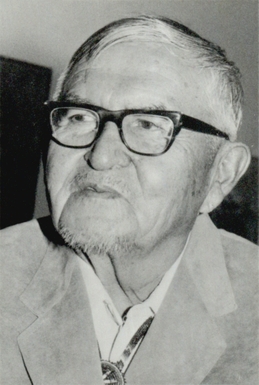
Allan Capron Houser or Haozous was a Chiricahua Apache sculptor, painter, and book illustrator born in Oklahoma. He was one of the most renowned Native American painters and Modernist sculptors of the 20th century.
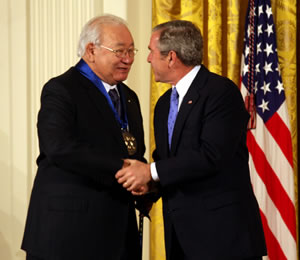
Navarre Scotte Momaday was an American novelist, short story writer, essayist, and poet. His novel House Made of Dawn was awarded the Pulitzer Prize for Fiction in 1969, and is considered the first major work of the Native American Renaissance.

For state legislator of Borth Carolina Alexander C. McIntosh see North Carolina General Assembly of 1899–1900
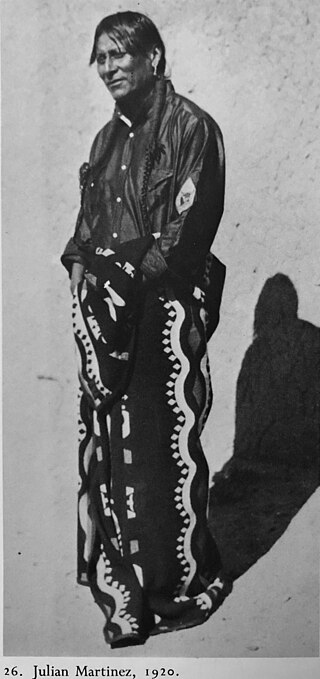
Julián Martínez, also known as Pocano (1879–1943), was a San Ildefonso Pueblo potter, painter, and the patriarch of a family of Native American ceramic artists in the United States.

Irving Kriesberg was an American painter, sculptor, educator, author, and filmmaker, whose work combined elements of Abstract Expressionism with representational human, animal, and humanoid forms. Because Kriesberg blended formalist elements with figurative forms he is often considered to be a Figurative Expressionist.
Monroe Tsatoke (1904–1937) was a Kiowa painter and a member of the Kiowa Six from Oklahoma.
Walter Richard West Sr., was a painter, sculptor, and educator. He led the Art Department at Bacone College from 1947 to 1970. He later taught at Haskell Institute for several years. West was an enrolled citizen of the Cheyenne and Arapaho Tribes.
The Bacone school or Bacone style of painting, drawing, and printmaking is a Native American intertribal "Flatstyle" art movement, primarily from the mid-20th century in Eastern Oklahoma and named for Bacone College. This art movement bridges historical, tribally-specific pictorial painting and carving practices towards an intertribal Modernist style of easel painting. This style is also influenced by the art programs of Chilocco Indian School, north of Ponca City, Oklahoma, and Haskell Indian Industrial Training Institute, in Lawrence, Kansas and features a mix of Southeastern, Prairie, and Central Plains tribes.
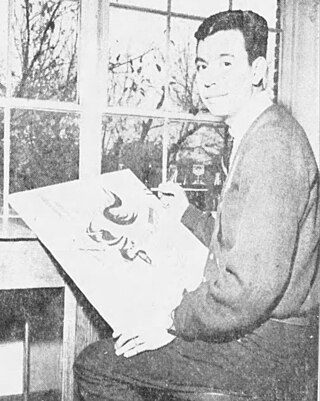
Arthur Douglas Amiotte is an Oglala Lakota Native American painter, collage artist, educator, and author.
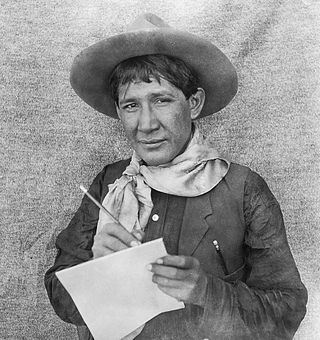
Earnest Spybuck was an Absentee Shawnee Native American artist, who was born on the land allotted the Shawnee Indians in Indian Territory and what was to later become Pottawatomie County, Oklahoma, near the town of Tecumseh. M. R. Harrington, an archaeologist/anthropologist, was touring the area documenting Native Americans, their history, culture and living habits. Interested in the religious ceremonies of the Shawnee which included the use of peyote, Harrington had ventured to the Shawnee Tribal lands. There he learned of Earnest Spybuck's artistic work and encouraged Spybuck in his endeavors. While Spybuck's work was obviously art, Harrington saw that he was illustrating detailed scenes of ceremonies, games, and social gatherings which could be used to illustrate many anthropological publications. Spybuck's work was received positively by both Native American and non-native artistic communities. Many of his works are now held by the Smithsonian's National Museum of the American Indian.
Frank Day, also Ly-dam-lilly was a Native American artist from California.

Simone Leigh is an American artist from Chicago who works in New York City in the United States. She works in various media including sculpture, installations, video, performance, and social practice. Leigh has described her work as auto-ethnographic, and her interests include African art and vernacular objects, performance, and feminism. Her work is concerned with the marginalization of women of color and reframes their experience as central to society. Leigh has often said that her work is focused on “Black female subjectivity,” with an interest in complex interplays between various strands of history. She was named one of the 100 most influential people in the world by Time magazine in 2023.
John Coleman is an American sculptor and painter. His subject matter focuses on the American West, especially Native American historical and mythological figures of Southwestern United States. His works are held in the permanent collections of the Briscoe Western Art Museum, The James Western and Wildlife Museum, Desert Caballeros Western Museum, Joslyn Art Museum, Gilcrease Museum, National Cowboy & Western Heritage Museum, Phoenix Art Museum, Tucson Museum of Art, and Western Spirit: Scottsdale's Museum of the West.

Yatika Starr Fields is a Native American painter, muralist and street artist, born in the city of Tulsa, Oklahoma. His artworks were shown at numerous galleries and museums, including the APEC Young Artist Exhibition and recently in the Sam Noble Museum.
Rachel Concho is a Native American artist and potter of the Acoma Pueblo. She is best known for her painted seed jars: small circular pots, nearly closed except for a small hole at the top, used for storing seeds from one harvest for planting in the next. She draws inspiration from ancient designs of the Acoma Pueblo including from shards associated with the Mimbres culture, which flourished in what is now New Mexico and Arizona from about 200 CE to the Spanish conquests of the sixteenth century. Concho has won many prizes for her work, including "Best in Show" at the Santa Fe Indian Market of 2000. Her seed jars have entered the permanent collections of several museums, including the Smithsonian Institution.
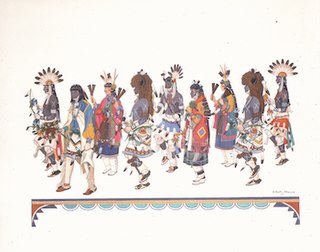
Gilbert Benjamin Atencio, also called Wah Peen, was a San Ildefonso Pueblo painter, potter, medical Illustrator, and politician.

Lorenzo Beard, also called Horse Chief, was a Cheyenne-Arapaho American painter whose subjects included buffalo and ceremonial figures. His work has been exhibited across the world, including at the National Gallery of Art and as part of the University of Oklahoma's European Tours in the 1950s. Beard's artwork has been in the permanent collections of institutions including the University of Oklahoma Museum of Art and the Southwest Museum of the American Indian.
References
- 1 2 3 4 King, Jeanne Snodgrass (1968). American Indian painters; a biographical directory. Smithsonian Libraries. New York : Museum of the American Indian, Heye Foundation.
- ↑ "Poferio Tirador Gopher Armstrong | Art Auction Results". www.mutualart.com. Retrieved 2021-08-02.
- ↑ "Joslyn Art Museum A N N U A L R E P O R T - PDF Free Download". docplayer.net. Retrieved 2021-08-02.
- ↑ "Porferio Tirador "Gopher" Armstrong (1935-2010) -..." www.findagrave.com. Retrieved 2021-08-02.